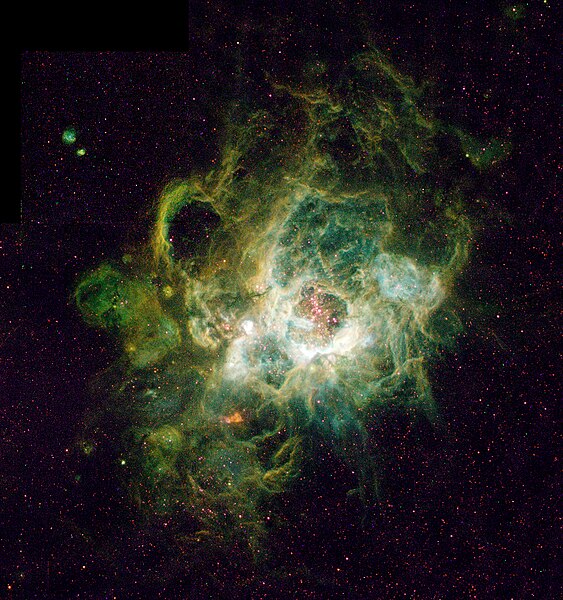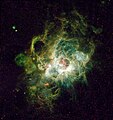Plik:Nursery of New Stars - GPN-2000-000972.jpg

Rozmiar podglądu – 563 × 600 pikseli. Inne rozdzielczości: 225 × 240 pikseli | 450 × 480 pikseli | 721 × 768 pikseli | 1127 × 1201 pikseli.
Rozmiar pierwotny (1127 × 1201 pikseli, rozmiar pliku: 2,42 MB, typ MIME: image/jpeg)
Historia pliku
Kliknij na datę/czas, aby zobaczyć, jak plik wyglądał w tym czasie.
| Data i czas | Miniatura | Wymiary | Użytkownik | Opis | |
|---|---|---|---|---|---|
| aktualny | 20:12, 8 sie 2019 |  | 1127 × 1201 (2,42 MB) | BevinKacon | Reverted to version as of 01:11, 9 April 2009 (UTC) bad upscale by new user |
| 15:38, 3 sie 2019 |  | 1690 × 1800 (2,84 MB) | Armin3636 | بالا بردن کیفیت | |
| 14:08, 29 lip 2019 |  | 1024 × 1091 (1,21 MB) | Armin3636 | بارگذاری کامل پرونده | |
| 03:11, 9 kwi 2009 |  | 1127 × 1201 (2,42 MB) | BotMultichillT | {{Information |Description={{en|1=This is a Hubble Space Telescope image (right) of a vast nebula called NGC 604, which lies in the neighboring spiral galaxy M33, located 2.7 million light-years away in the constellation Triangulum. This is a site where |
Lokalne wykorzystanie pliku
Następujące strony korzystają z tego pliku:
- Ciało niebieskie
- Gromada otwarta
- Mgławica
- Obszar H II
- Wodór
- Wikipedysta:Sobi3ch/galeria
- Wikipedia:Artykuły na Medal/archiwum/2007-11
- Wikipedia:Artykuły na Medal/archiwum/2011-07
- Wikipedia:Artykuły na Medal/archiwum/2011-08
- Wikipedia:Artykuły na Medal/zajawki/Obszar H II
- Wikipedia:Wikireadery/Czy wiesz, że
- Wikipedia:Zajawka wyróżnionego artykułu/Obszar H II
- Portal:Astronomia/Artykuł miesiąca 12 2006
- Portal:Astronomia/Zdjęcie/23 września 2005
- Wikiprojekt:Czy wiesz/archiwum/2006-06-04:2006-09-21
Globalne wykorzystanie pliku
Ten plik jest wykorzystywany także w innych projektach wiki:
- Wykorzystanie na af.wikipedia.org
- Wykorzystanie na anp.wikipedia.org
- Wykorzystanie na an.wikipedia.org
- Wykorzystanie na ar.wikipedia.org
- Wykorzystanie na arz.wikipedia.org
- Wykorzystanie na ast.wikipedia.org
- Wykorzystanie na az.wikipedia.org
- Wykorzystanie na ba.wikipedia.org
- Wykorzystanie na be.wikipedia.org
- Wykorzystanie na bg.wikipedia.org
- Wykorzystanie na bn.wikipedia.org
- Wykorzystanie na bs.wikipedia.org
- Wykorzystanie na ca.wikipedia.org
- Wykorzystanie na ceb.wikipedia.org
- Wykorzystanie na ce.wikipedia.org
- Wykorzystanie na cs.wikipedia.org
- Wykorzystanie na da.wikipedia.org
- Wykorzystanie na de.wikipedia.org
- Wykorzystanie na de.wikibooks.org
- Wykorzystanie na diq.wikipedia.org
- Wykorzystanie na el.wikipedia.org
Pokaż listę globalnego wykorzystania tego pliku.
